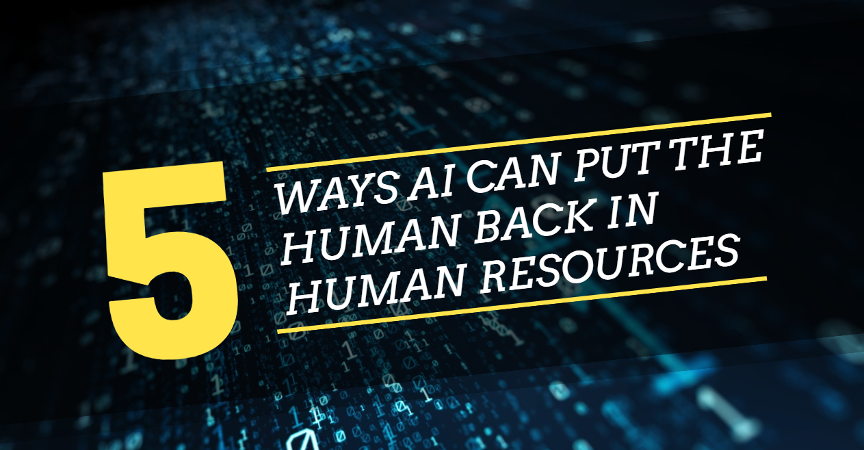A quick scroll through the headlines just about any day of the week reveals a glut of fear-mongering headlines about AI and various forms of AI-driven technology. But, when it comes to human resources and recruitment, such fears are – generally speaking – baseless. As FDR once said, “the only thing we have to fear is fear itself.” Or, if you prefer your admonitions to be more contemporary: “Fear is the path to the dark side.”
Fortunately, there’s no shortage of optimism in our sector when it comes to AI-driven technologies. In fact, according to a global survey my own company recently released, two-thirds of global staffing firms will have adopted AI-driven applicant tracking systems (ATS) by the end of 2020. The same survey showed the vast majority of HR and recruitment leaders believe AI can help build relationships with candidates, improve productivity, and eliminate bias. Respondents also indicated that AI-enabled chatbots are critical for reaching gen-z and millennial recruits.
So, how can we make the most of this sea change that’s happening without selling our souls and jobs to the so-called robots that so many fear? Here are five ways that artificial intelligence compliments the industry by putting the human back in human resources:
- MORE TIME – Since the dawn of the Internet, job boards have grown into a monster – pardon the pun. Recruiters have access to tens of thousands of candidates when looking to fill a single job opening. Sorting through that glut of information is a tedious and time-consuming task, to say the least. Data analysis was never meant to take up an overwhelming majority of a recruiter’s time. A recruiter is at his or her best when interacting with candidates and clients. By doing the tedious work of narrowing down an impossibly large field of contenders for a given opening, AI-driven applicant tracking systems (ATS) give recruiters exponentially more time to do just that – interact with the most qualified candidates.
- LESS BIAS – While much has been written about the dangers of AI reinforcing cultural and other biases in hiring, the opposite is a more likely outcome if the technology is managed properly. AI is nothing without its human collaborator to ensure its algorithms properly filter human bias. As long as we are diligent in our vigilance and constantly refining and addressing areas where such biases might leak into the process, then we can be assured that AI will deliver less – not more – human bias into the hiring equation. Perhaps – in this case, at least – we all can agree that removing the human part (our biases) of the mix is a good thing.
- THE ROBOTS ARE COMING – Yes, they are, and believe it or not, that’s a good thing when it comes to recruiting. For example, AI-enabled chatbots can help your organization keep a more open line of communication with its existing workforce, while also enabling your recruiters to meet younger generations where they live. Research supports that 52% of recruitment leaders believe that AI-enabled Chatbots will improve productivity and the recruitment experience of the candidate, ultimately making interactions more human by allowing recruiters to be less intrusive and more strategic.
- AI ENABLES CLONING – Well, not exactly. But, AI and machine learning can work together to provide better matches for your recruiters in search of similarly qualified candidates. For example, if you speak with a candidate that seems a perfect match, there’s no need to end the search right there. The most advanced AI-driven ATS solutions afford you the opportunity to set that candidate’s qualifications as a profile that can be “cloned.” At the click of a mouse, AI-engines can deliver you more candidates just like him or her. At the end of the day, machines finding more qualified human candidates for your recruiters means better outcomes and more workplace satisfaction in the long run, and that’s a very human thing.
- LESS RED TAPE – Marketing requirements and other compliance issues are a major pain point for recruiters. Crossing your T’s and dotting your I’s is critical. By trusting the more tedious elements of those tasks to AI-driven systems, recruiters once again get their time back to spend on human relations and candidate interactions, while minimizing the risks associated with increasingly complex marketing requirements. In fact, respondents in our survey who identified marketing as a pain point were 23 percent more likely to adopt AI in their recruitment practices.
When we collaborate with AI technology in the right way, it ultimately ensures that our HR-related tasks are performed as well as humanly possible. The dawn of AI in our world may not be quite as significant as FDR’s New Deal, but it certainly isn’t something to be feared. While our new “robot overlords” might not be quite as benevolent or have quite as much personality as R2-D2 and C3-PO, given half a chance and used properly, perhaps they can help lead us to a more human tomorrow. In the meantime, may the force be with you!
